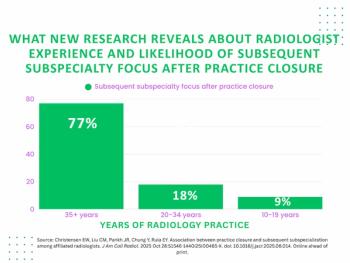
Mobile CT sales fuel Analogic revenues
Sales of a new portable CT scanner helped Analogic post recordrevenues and earnings for its fourth quarter and fiscal 1996 (end-July).Analogic also saw gains in other areas of its medical technologybusiness, according to officials with the Peabody, MA,
Sales of a new portable CT scanner helped Analogic post recordrevenues and earnings for its fourth quarter and fiscal 1996 (end-July).Analogic also saw gains in other areas of its medical technologybusiness, according to officials with the Peabody, MA, vendor.
For the year, Analogic posted revenue of $230.5 million, up10% compared with sales of $208.8 million the year before. Netincome for 1996 stood at $13.1 million, up from $12.7 millionin fiscal 1995.
Despite the year-over-year gains, it was in the fourth quarterthat Analogic saw real growth. Revenues for the most recent periodwere a record $70.4 million, up 25% compared with $56.3 millionin the same period last year. Net income grew to $5.9 million,compared with $4.2 million in the fourth quarter of 1995.
The revenue growth is due to higher sales in Analogic's medicaltechnology business, according to senior vice president and treasurerJohn Tarello. In particular, Analogic experienced strong fourth-quartersales of a portable CT scanner that went into production in January,Tarello said.
Analogic has licensed the system to Philips Medical Systems,which sells the unit in two versions as Tomoscan/M and Tomoscan/EG(SCAN 2/15/95). Philips debuted the scanner to the Asian marketat the International Congress of Radiology meeting in Beijinglast June (SCAN 7/17/96).
Newsletter
Stay at the forefront of radiology with the Diagnostic Imaging newsletter, delivering the latest news, clinical insights, and imaging advancements for today’s radiologists.






























